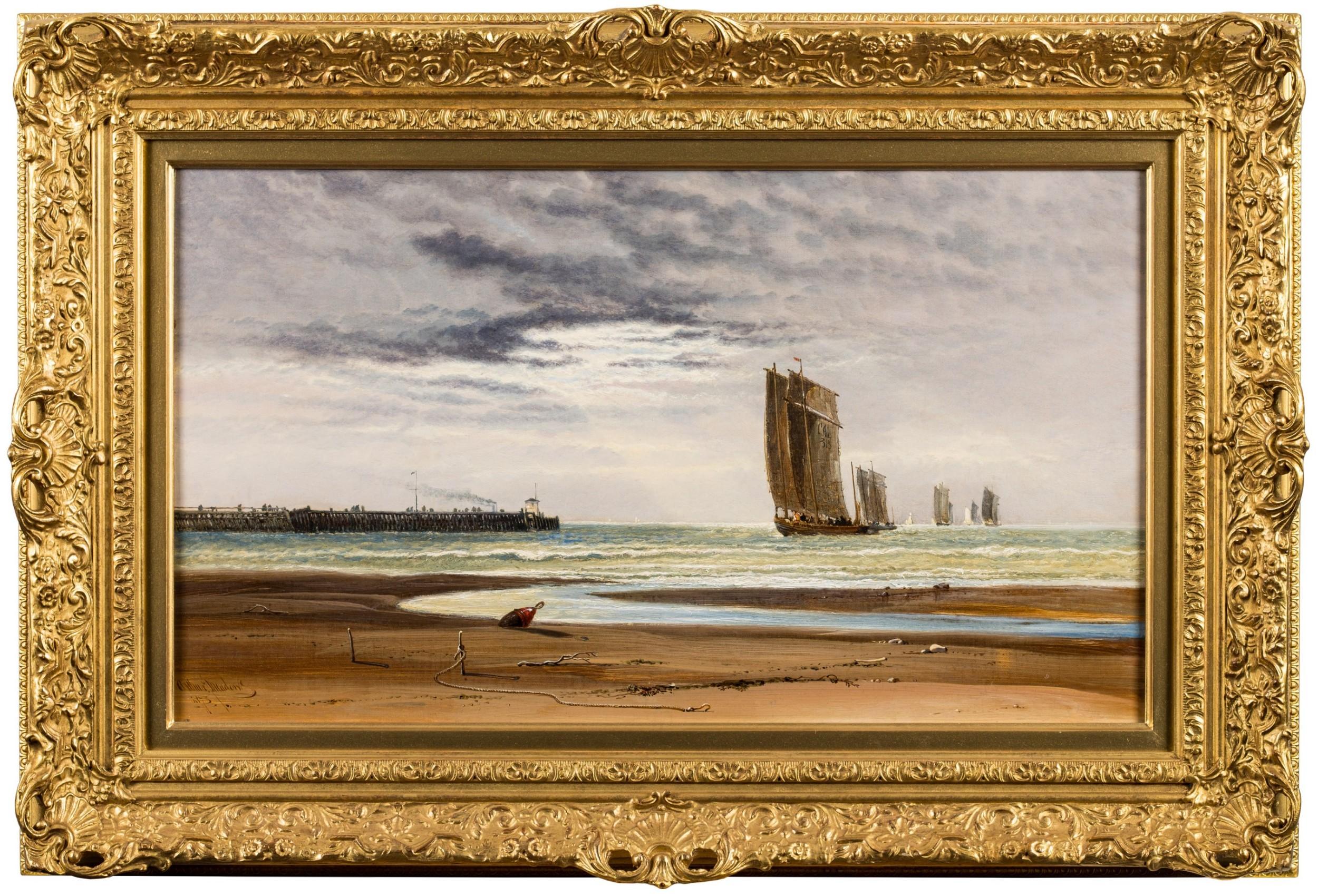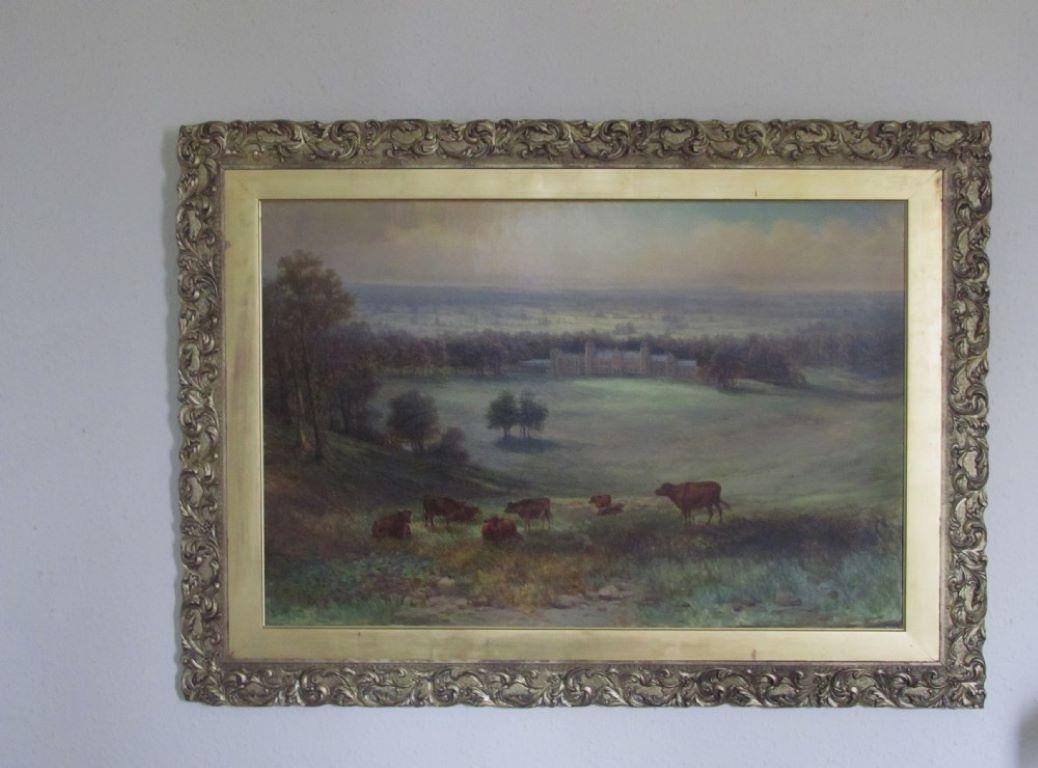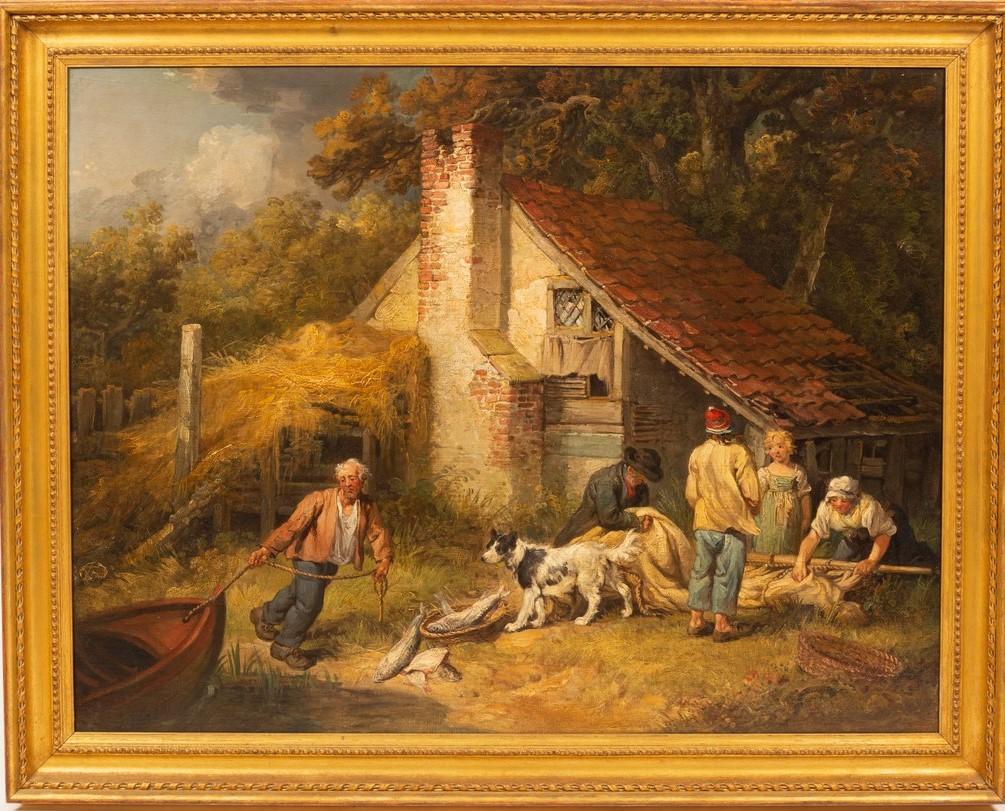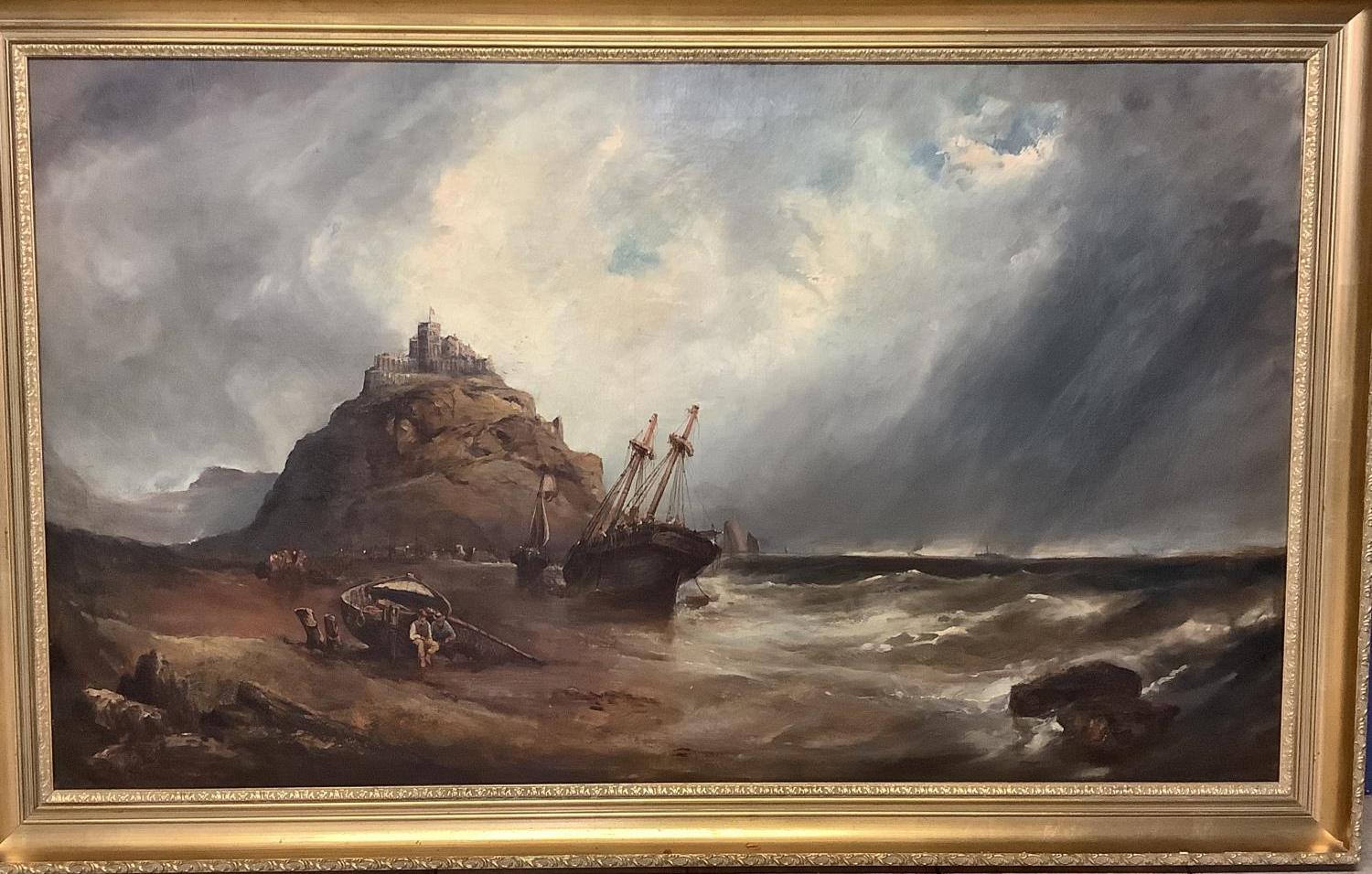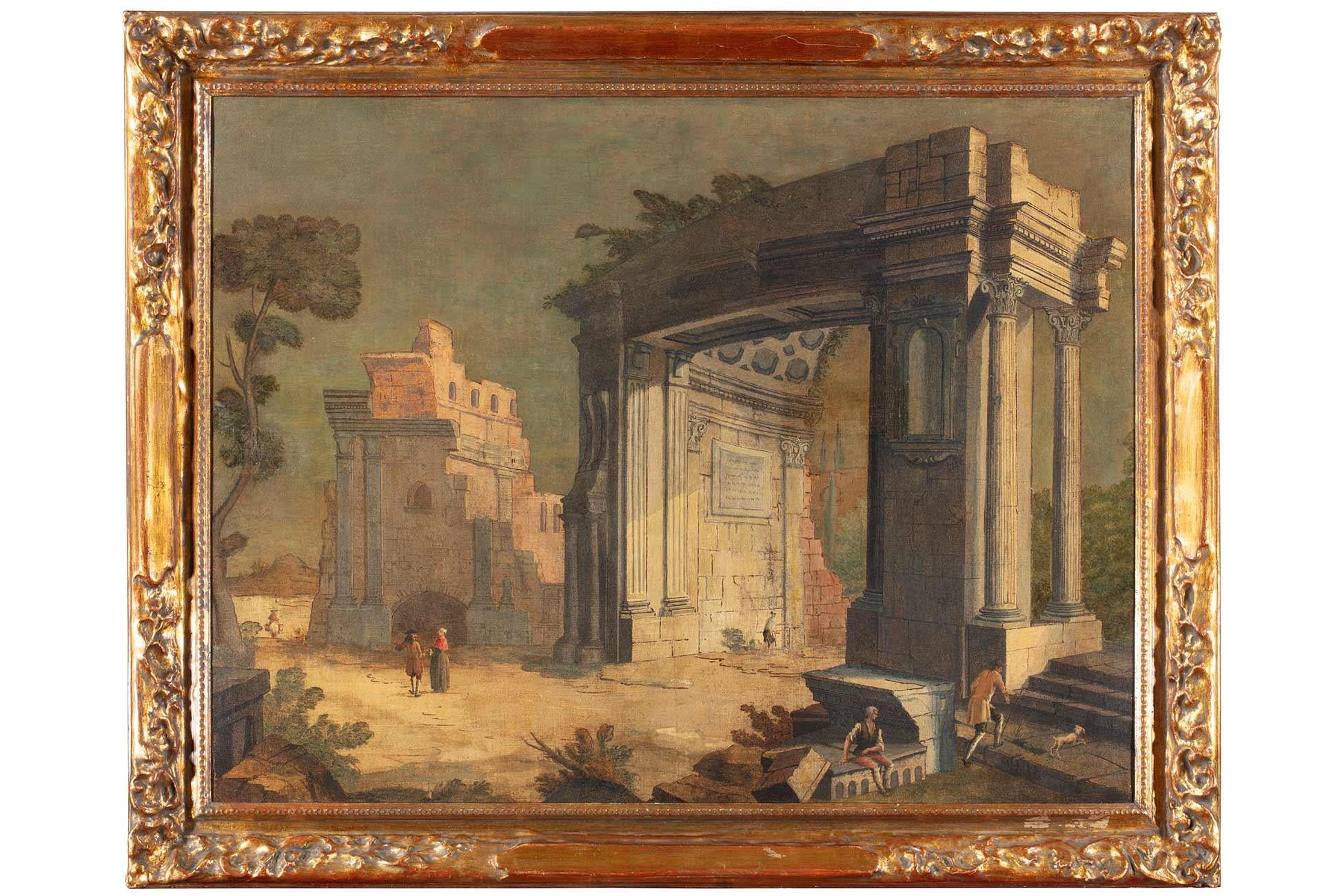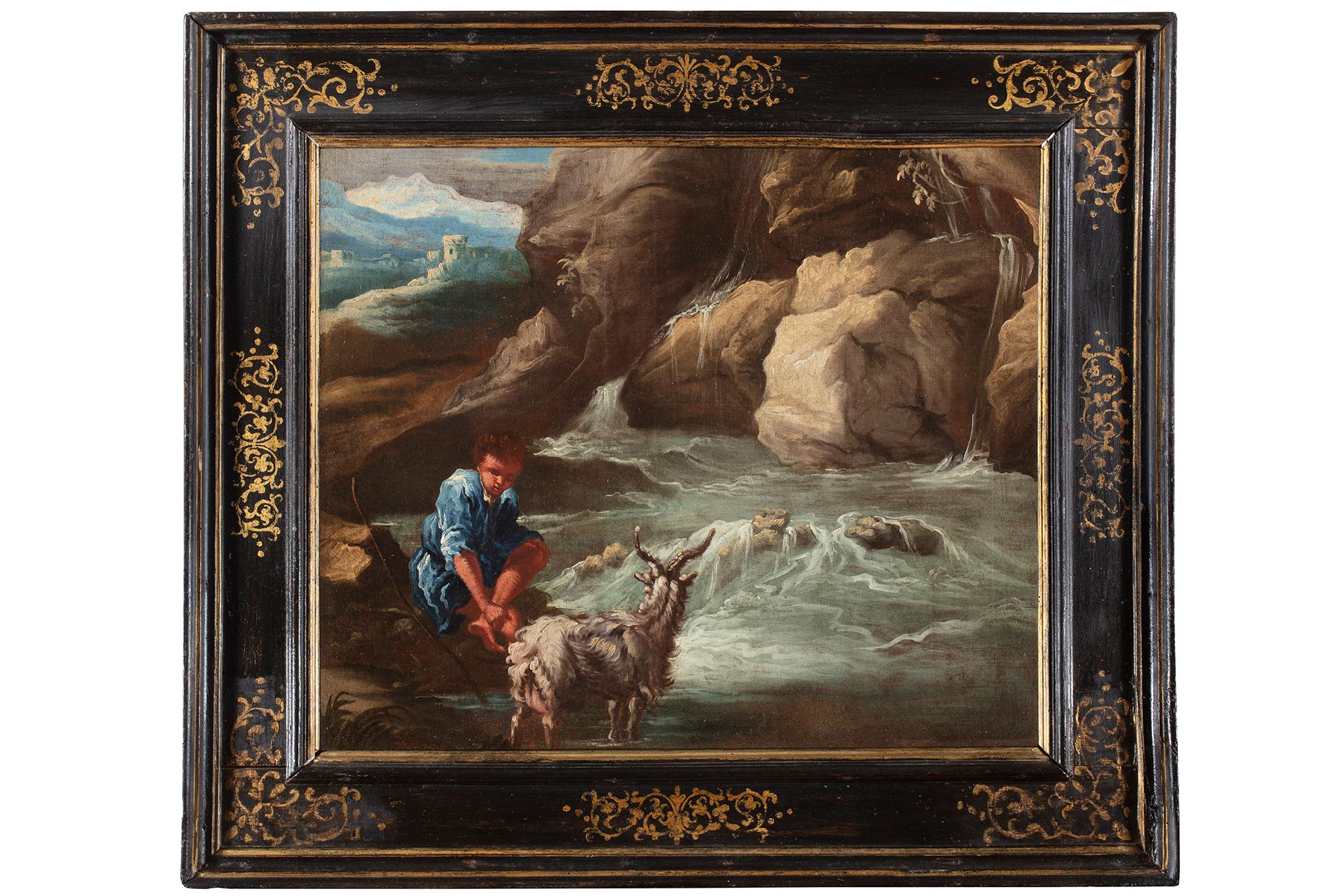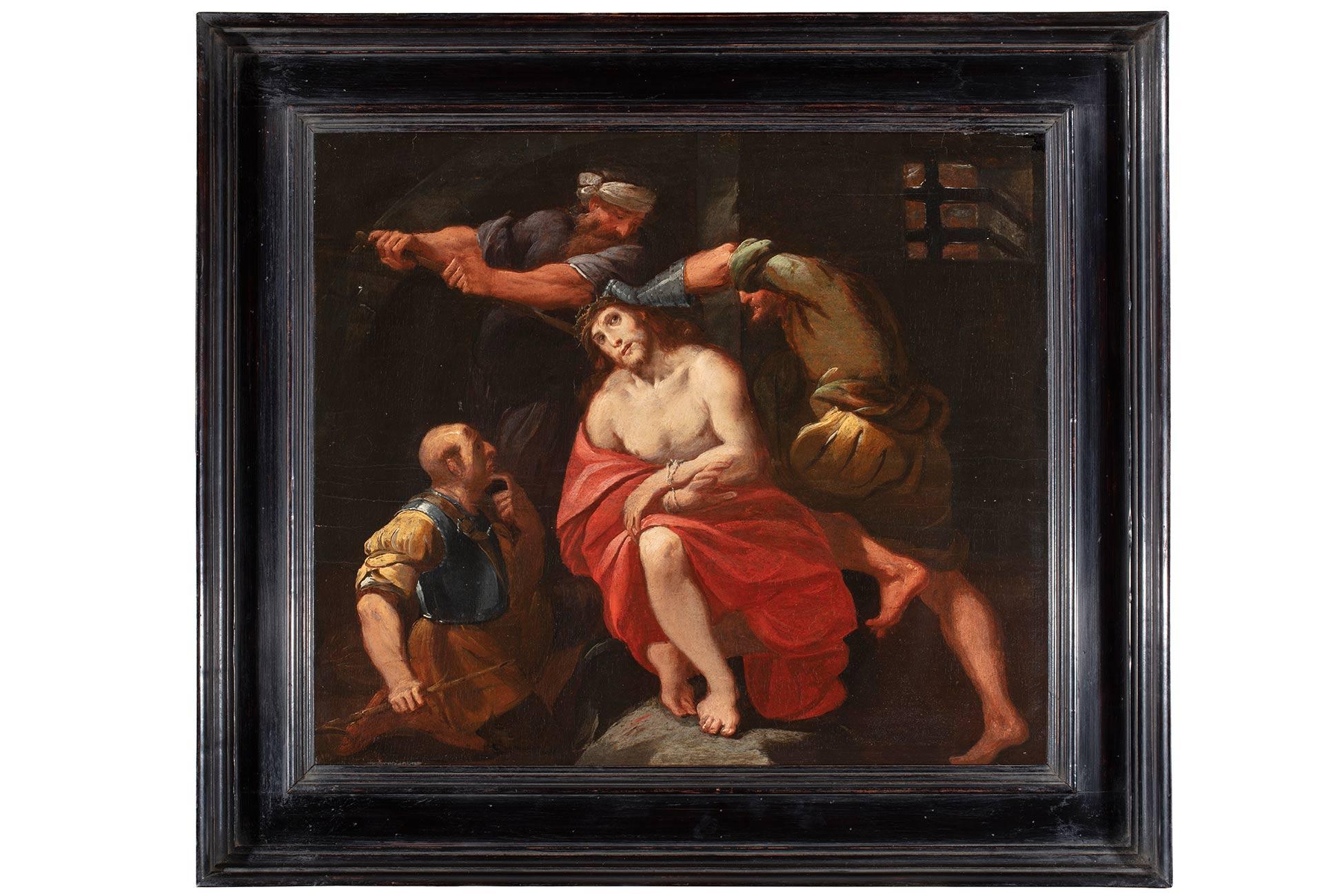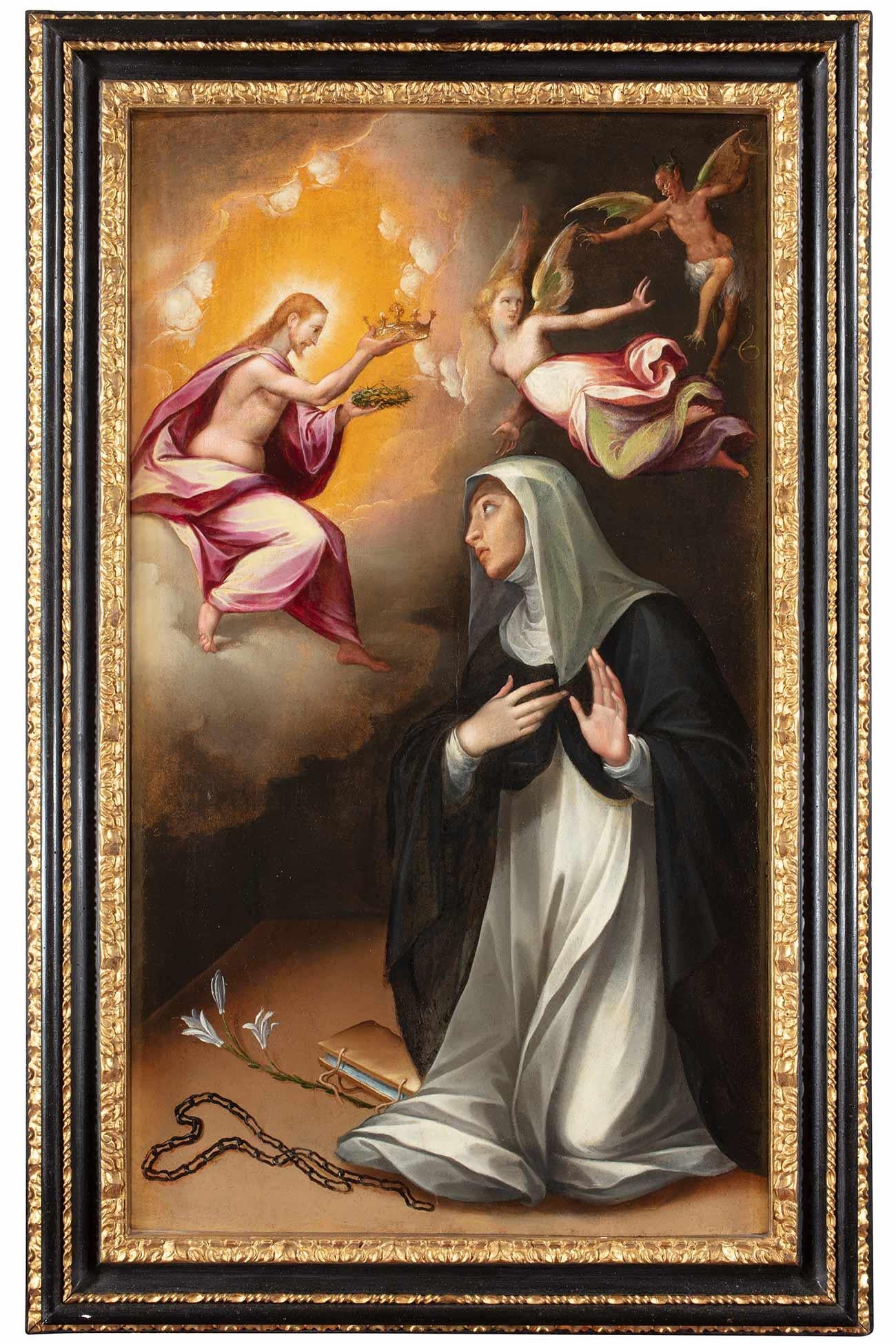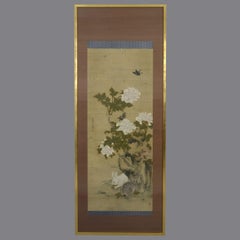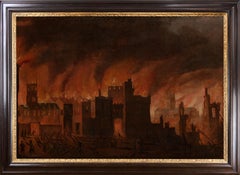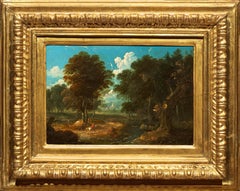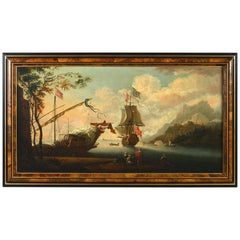
Attributed to Adriaen van Diest: A Port Scene - Oil on Canvas
Want more images or videos?
Request additional images or videos from the seller
1 of 7
Attributed to Adriaen van Diest: A Port Scene - Oil on Canvas
About the Item
- Dimensions:Height: 43 in (109.22 cm)Width: 58 in (147.32 cm)Depth: 3 in (7.62 cm)
- Medium:
- Movement & Style:
- Period:Late 17th Century
- Condition:
- Gallery Location:London, GB
- Reference Number:Seller: 13111stDibs: LU115224068741
About the Seller
No Reviews Yet
Vetted Seller
These experienced sellers undergo a comprehensive evaluation by our team of in-house experts.
1stDibs seller since 2019
9 sales on 1stDibs
More From This SellerView All
- After Richard Westall, ‘The Fishing Party’ 19th Century Oil on CanvasLocated in London, GBAfter Richard Westall, early 19th century ‘The Fishing Party’ Oil on panel; held in a period Empire style frame. Dimensions listed refer to framed size. Provenance: Private Colle...Category
Late 18th Century Romantic Figurative Paintings
MaterialsOil
- Large 19th Century Silk Scrollwork PaintingLocated in London, GBA large early nineteenth century scroll work painting, depicting two rabbits beneath white peonies, together with butterflies and a grass hopper. Ink and...Category
19th Century Qing Landscape Paintings
MaterialsWatercolor, Ink
- 19th Century Victorian Period Watercolour of a Ship - Signed JW HolmesLocated in London, GBA large late 19th century watercolour depicting a sailing ship 'The Gowanbank' at sea. Signed JW Holmes. The gilt paper mount inscribed: Ship "Gowanbank...Category
19th Century Victorian Landscape Drawings and Watercolors
MaterialsWatercolor
- Charles Jervas, Portrait of Joseph MellishBy Charles JervasLocated in London, GBCharles Jervas (1675-1739) Portrait of Joseph Mellish (1675-1733) Oil on canvas; held in a carved period frame Dimensions refer to size of frame. Provenance: Blyth Hall, Nottinghamshire, England; by descent to Sir Andrew Buchanan of Hodsock Priory, Nottinghamshire In 1635 John Mellish, a merchant tailor of London, bought the estate of Blyth in Nottinghamshire. His son, a wealthy Oporto merchant, dying unmarried, left Blyth in 1703 to a cousin, Joseph Mellish, who became one of Newcastle’s earliest and most important political supporters in the county. He went up to Clare College, Cambridge in 1692 and on to the Inner Temple the following year. He married Dorothea Gore, daughter of Sir William Gore...Category
Early 18th Century Old Masters Portrait Paintings
MaterialsOil
- Henry Pickering, Portrait of a GentlemanBy Henry PickeringLocated in London, GBHenry Pickering, Portrait of a Gentleman Oil on canvas; signed and dated 1759; held in a giltwood period frame Provenance: Lenygon & Morant Ltd. c.1900; Knoedler, October 1912 (Sto...Category
Mid-18th Century Old Masters Portrait Paintings
MaterialsOil
- 18th Century Double Portrait, Follower of Sir Joshua Reynolds Oil on CanvasLocated in London, GBFollower of Sir Joshua Reynolds (1723 - 1792) A double portrait of a married couple Sir Thomas Tancred (d.1784) and his wife Penelope (d.1837) daughter of Thomas Ashton (or Assheto...Category
1770s Old Masters Portrait Paintings
MaterialsOil, Canvas
You May Also Like
- Early oil depicting the Great Fire of LondonLocated in London, GBThe Great Fire of London in September 1666 was one of the greatest disasters in the city’s history. The City, with its wooden houses crowded together in narrow streets, was a natural fire risk, and predictions that London would burn down became a shocking reality. The fire began in a bakery in Pudding Lane, an area near the Thames teeming with warehouses and shops full of flammable materials, such as timber, oil, coal, pitch and turpentine. Inevitably the fire spread rapidly from this area into the City. Our painting depicts the impact of the fire on those who were caught in it and creates a very dramatic impression of what the fire was like. Closer inspection reveals a scene of chaos and panic with people running out of the gates. It shows Cripplegate in the north of the City, with St Giles without Cripplegate to its left, in flames (on the site of the present day Barbican). The painting probably represents the fire on the night of Tuesday 4 September, when four-fifths of the City was burning at once, including St Paul's Cathedral. Old St Paul’s can be seen to the right of the canvas, the medieval church with its thick stone walls, was considered a place of safety, but the building was covered in wooden scaffolding as it was in the midst of being restored by the then little known architect, Christopher Wren and caught fire. Our painting seems to depict a specific moment on the Tuesday night when the lead on St Paul’s caught fire and, as the diarist John Evelyn described: ‘the stones of Paul’s flew like grenades, the melting lead running down the streets in a stream and the very pavements glowing with the firey redness, so as no horse, nor man, was able to tread on them.’ Although the loss of life was minimal, some accounts record only sixteen perished, the magnitude of the property loss was shocking – some four hundred and thirty acres, about eighty per cent of the City proper was destroyed, including over thirteen thousand houses, eighty-nine churches, and fifty-two Guild Halls. Thousands were homeless and financially ruined. The Great Fire, and the subsequent fire of 1676, which destroyed over six hundred houses south of the Thames, changed the appearance of London forever. The one constructive outcome of the Great Fire was that the plague, which had devastated the population of London since 1665, diminished greatly, due to the mass death of the plague-carrying rats in the blaze. The fire was widely reported in eyewitness accounts, newspapers, letters and diaries. Samuel Pepys recorded climbing the steeple of Barking Church from which he viewed the destroyed City: ‘the saddest sight of desolation that I ever saw.’ There was an official enquiry into the causes of the fire, petitions to the King and Lord Mayor to rebuild, new legislation and building Acts. Naturally, the fire became a dramatic and extremely popular subject for painters and engravers. A group of works relatively closely related to the present picture have been traditionally ascribed to Jan Griffier...Category
17th Century Old Masters Landscape Paintings
MaterialsCanvas, Oil
- Stag Hunting in the Vicinity of Nuremberg by a German Artist Peter von BemmelLocated in PARIS, FRThis small landscape shows a hunting scene: two riders are chasing a stag with their dogs at the edge of a forest. Signed by Peter von Bemmel, it is typical of the production of this...Category
1720s Old Masters Landscape Paintings
MaterialsCopper
- Arthur Joseph Meadows 19th Century Seascape Off CalaisBy Arthur Joseph MeadowsLocated in York, GBA very fine painting by the renowned seascape painter Arthur Joseph Meadows,Off Calais; fishing fleet returning at low tide. Housed in an antique style gilt frame the size overall is...Category
19th Century Old Masters Landscape Paintings
MaterialsOil
$6,393 Sale Price37% OffFree Shipping - 19th Century, Victorian, landscape , cows , Country House Samuel Lawson BoothLocated in York, GBS Lawson Booth : Country House in extensive landscape with cattle in the foreground, oil on canvas signed and dated '98, 60cm x 90cm (35x23 inches approx image) size with frame appro...Category
19th Century Old Masters Landscape Paintings
MaterialsOil
- James ward landscape oil Bringing in the CatchBy James WardLocated in York, GBJames ward landscape oil Bringing in the Catch A charming scene of a family "bringing in the catch" showing figures outside a cottage, man pullng in the boat with his dog watching by...Category
19th Century Old Masters Landscape Paintings
MaterialsOil
- St Michael's Mount, Cornwall Seascape OilLocated in York, GBThis early 20th century oil on canvas depicts a nautical scene with a view of St Michaels Mount beyond. Although as yet, not attributed to a particular artist,this painting has cl...Category
Early 20th Century Old Masters Landscape Paintings
MaterialsOil


